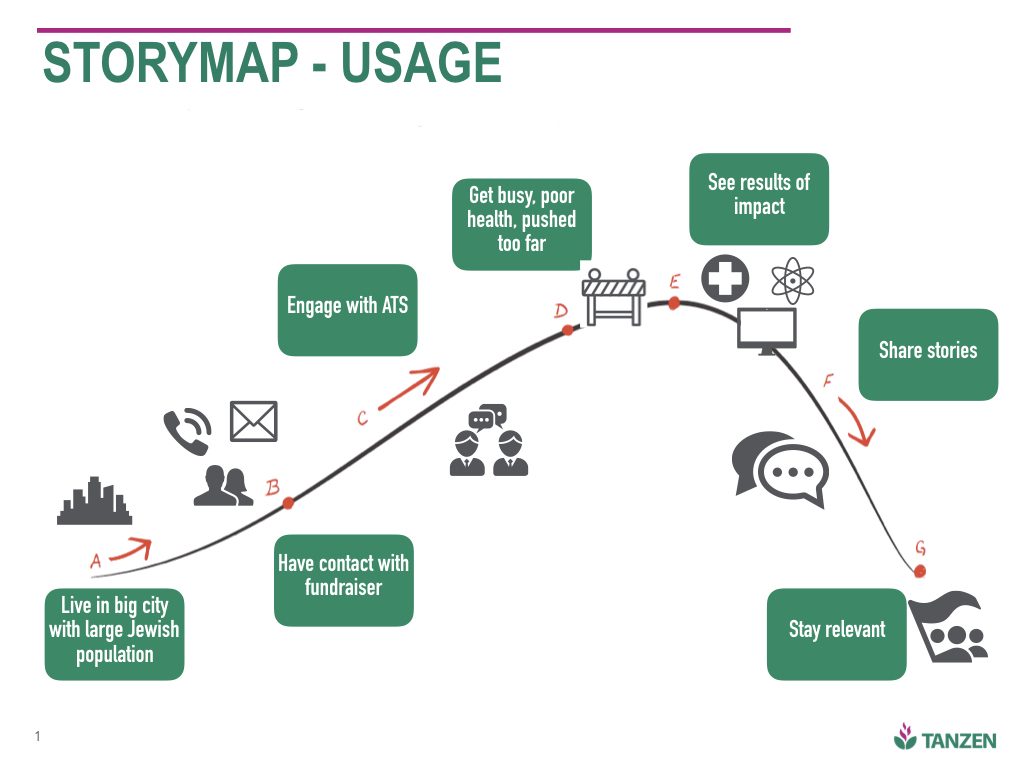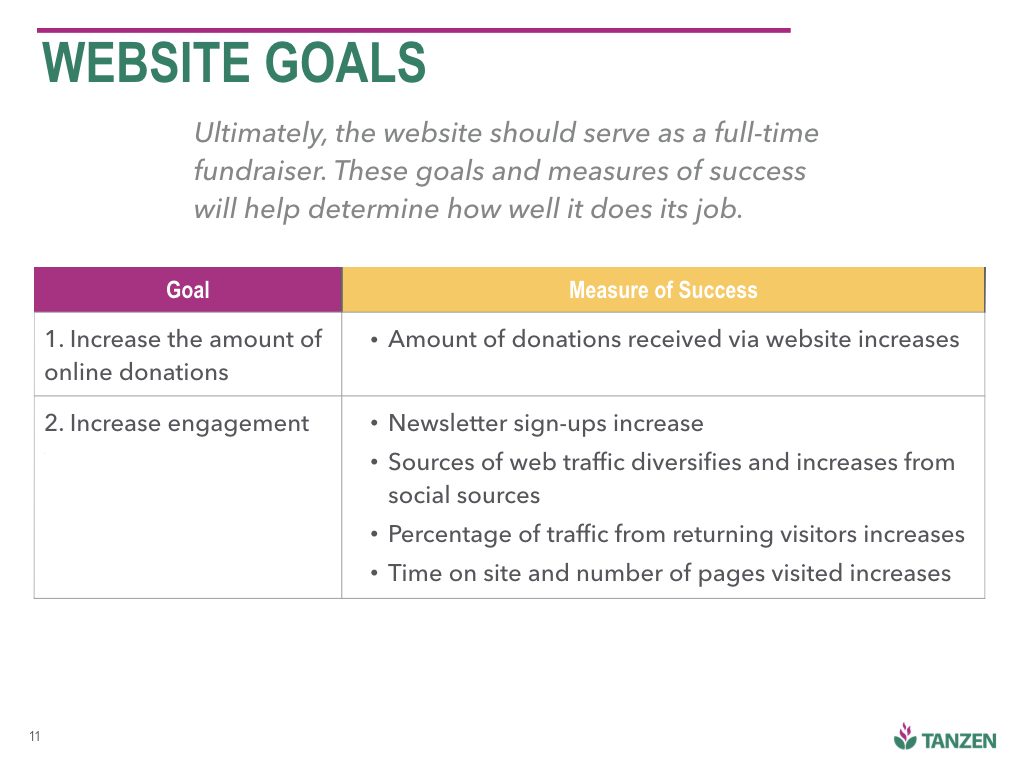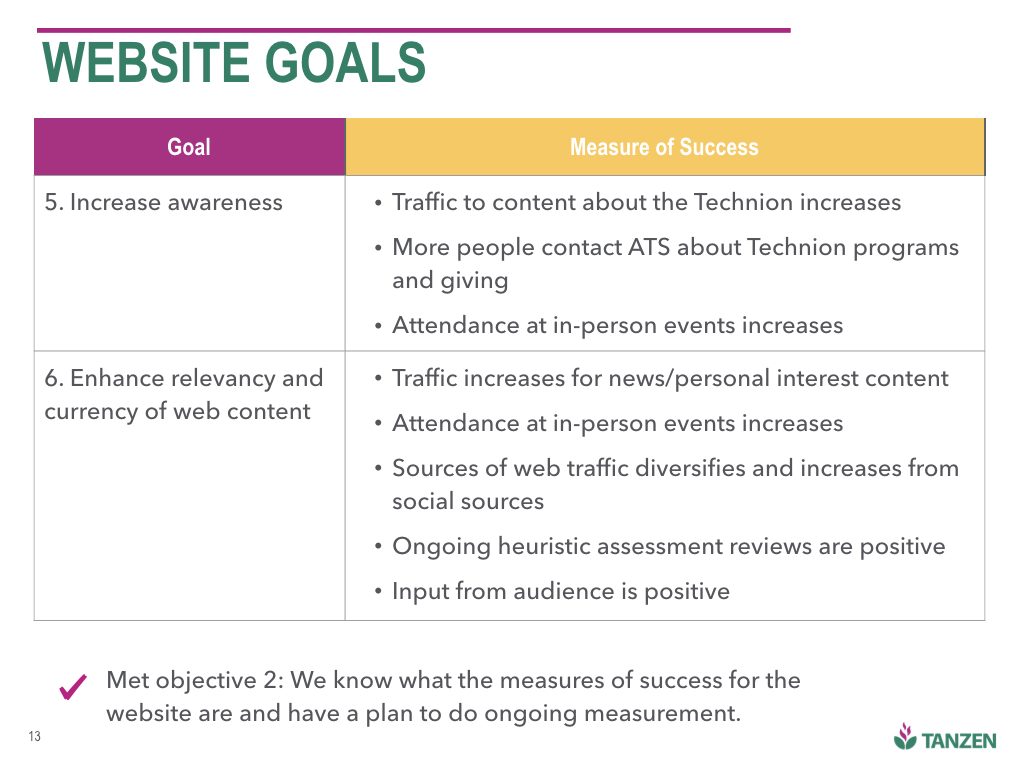*All slide images courtesy of Tanzen.
Who is this Organization?
This organization’s goal is to raise money for an elite university in Israel. Therefore, the website should provide information that urges people to donate and that guides them through the donation process.
Project Goals
I was brought on by Carrie Hane of Tanzen to assist with this project.
- We have listened to internal stakeholders and donors from around the country, from various ages, and donor levels, and the communications team at the non-profit.
- We know what the measures of success for the website are and have a plan to do ongoing measurement.
- The website is easier to keep updated in the following ways:
- A clear and efficient workflow for editing, adding, or removing content is established and followed
- Technology is flexible and scalable to accommodate future changes to content needs
- CMS has a clear maintenance schedule and upgrade path
- Google Analytics code is added so that appropriate data can be collected (see Goal 2)
- All stakeholders feel like their expectations were met and they knew the project status at all times.
Discovery: User Research and Story Mapping
I participated in the kick-off meeting and then reviewed stakeholder documents to better understand the client’s current content and branding. I conducted several stakeholder and donor interviews to contribute to the user research for the project (meeting project goal #1). We used the results from interviews to create user stories and two story maps. The origin story map demonstrates the user journey of someone who is discovering the organization for the first time, while the usage story map demonstrates the the user journey of someone who has already had some exposure to the organization.


We also came up with a content strategy statement that would guide the creation of content: The client’s website offers inspiring, educational content that helps raises money and create awareness for the university by making Jews who live in the U.S. who have an interest in technology feel inspired and motivated, convincing them to make a donation, sign up for emails, attend events, and share information about the university.
Finally, we came up with several goals for the website and how those goals should be measured to meet project goal #2:



Content Planning
Next we used the user stories and story maps to create a content model. A content model is a model that focuses on the structured content that you will actually publish. A content type has a definition and must also have attributes. The content model also shows the relationships between content types, so that the model can be easily converted into structured content. Content types and attributes can later become CMS fields. For example:
| Content Type | Attributes |
|---|---|
| Event: an activity that the organization or an affiliated organization hosts to share information about the university, its activities, or Israeli STEM innovations | Event Name |
| Description | |
| Topic | |
| Start/End Date & Time | |
| Venue | |
| Address 1 | |
| Address 2 | |
| Image | |
| Speaker | |
| Speaker Bio | |
| Host | |
| RSVP Information | |
| Cancellation Policy |
Below is an example of a small part of a model that shows the relationships between content types:

Next I audited the existing site content again the content model to see if we could use any of this content on the new site. The audit demonstrated that a very small percentage of content, the stories about the university’s innovations, would be useful on the new site. Auditing the existing content against the content model was very helpful because I could see if the content types applied to the content.
The next step was to create content sheets, which define the core content based on audience needs and business goals. The sheets also define the structure of the content based on the content model. Designers and developers use these sheets to create the interface design and the CMS.

Finally, a site menu was created for the main navigation of the site.
Potential Implementation
- Creating content (email, web, and social)
- Making the website easy to use and to meet goals
- Building a CMS that is flexible and scalable to accommodate future changes to content needs
